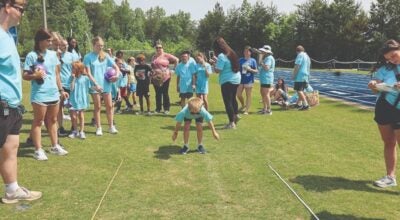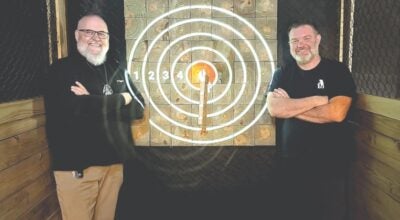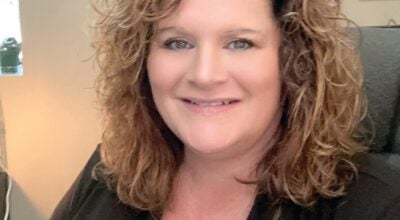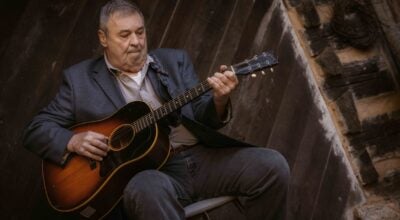Purple heart county
Published 10:00 pm Monday, July 14, 2014
To the Editor:
I read with great interest your front page article of June 20 entitled “Commissioners Declare Polk as Purple Heart County.” My heartfelt thanks go to the commissioners for this much-deserved recognition and to the Bulletin for your coverage. Alas, at least one name was inadvertently omitted from the list. My dad, Paul Cantrell (91 years of age, alive and well and a current Bulletin subscriber), landed at Omaha Beach with the 121st Regiment, 8th Division, USA. This was after the D-Day invasion, and they were made to feel that the area was relatively secure.
Dad was born in Tryon in 1922. I thought some readers might be interested in a few of his remembrances:
“When we left Ireland, I think we crossed the channel in an English ship. We landed at Omaha Beach. We laid off shore for a couple of days and were visited by ‘Bedcheck Charlie’ each evening. The ship gave us some fine fireworks but I don’t think they ever hit him. We went in on July 5, went over the side on rope nets into the landing craft.”
The boat used to ferry the soldiers from ship to land was known as the LCVP (landing craft vehicle/personnel). More than 20,000 of these plywood boats were made for the U.S. by Higgins Industry in Louisiana.
The LCVP could transport a platoon-sized complement of 36 men to shore at 9 knots (11 mph). They entered the boat by climbing down a cargo net hung from the side of their troop transport and exited by charging down the boat’s bow ramp.
“When we went ashore in that LCVP, for most of the time we were told to sit down. When we sat down we couldn’t see where we were going – we just felt the rise and drop of the boat and the pitching from side to side. That was the closest to getting seasick I ever was.
“We were placed in reserve for five days, after which the 121st began to push inland. When they put us in, they said we were going to clean up the Germans left behind. The next thing we knew we were on the front. The first wave had only secured about a five-mile band along the coast and it wasn’t long before we were on the front lines, moving in and out among the hedgerows of France.
“It was there that a bullet creased my shoulder. It knocked me down. When I stood up to check myself, I saw that it had cut a hole in the shoulder of my jacket.”
“We kept jumping hedgerows. We crossed one hedgerow and were on a deeper road when we received incoming machine gun fire. We all got low and Erwin Colodny, our squad leader, rose up and looked over the hedgerow. Machine gun bullets began cutting off the top of the hedge. He jumped down and said, ‘Cantrell, get up there!’ ”
Dad’s B.A.R. was the most firepower the squad had at the time, so he left his position, went up to the hedge and “started spraying the whole area” with his automatic rifle. He remembered, “It wasn’t long before the 88’s opened up on us. Shrapnel was flying everywhere. I got hit in the left chest, but it hit right in my pocket where I was carrying a photo book and a fountain pen. The shrapnel just left a blister.
At this point, Dad feels a need to sing a little line from a familiar war tune, “…those 88’s are breaking up that old gang of mine” (There goes Tom, there goes Jim, Off down Sniper’s lane, Never mind, they’ll come back, They just won’t look the same.)
“One round landed in the road between our two columns. If it’d gone off it would’ve gotten us all. That was my first day in combat.
“The next day our platoon went on around and joined with our company. We had been by ourselves. We spent the night in trenches and got up the next day. There was not any activity going on. There was a silo sitting in the middle of a field. As we were going down the road to check it out we saw seven or eight German soldiers lying on the side of the road dead. I’ve since wondered if they really were. I don’t know. We checked out the silo for Germans and there were none there.
“I had a couple of buddies from Paint Rock, North Carolina named Howard and James Moore. They were brothers and I think they both worked in the Post Office in Paint Rock. We were all in the 3rd Platoon. Ol’ Howard was an interesting looking fellow. He didn’t have more than three or four teeth in his mouth. He was a good friend. I was standing talking to my assistant squad leader when the mortar round went off behind me. I think a second one went off nearby. I heard the explosion and felt the pain and knew I’d been hit. I felt it in my legs and pulled my pants down to check. As I was turning around, I saw my buddy Howard just kind of laying back on the edge of the trench At first thought it looked like he was asleep with his head on his arm but he was dead. It got my squad leader, Erwin Colodny. I heard that Erwin died on a hospital ship going back to the U.S. It got my assistant squad leader. I heard that seven total were killed from those two mortar rounds.”
One wonders in the great scheme of things why during the same event one person lives and another doesn’t. We’ll learn all about that someday. Today, I am prayerfully thankful that God saw fit to spare the life of Paul Cantrell that day in Normandy. Had it worked out differently, I’d not be here to write this letter.
With many thanks for your work.
– Glenn Paul Cantrell
P.S. Included are a couple announcements from the Tryon Daily Bulletin. The use of the word “slightly” must have been an assurance of sorts to the family. Dad actually did not get back to his unit until October. But he was back in time to take part in the battle for Huertgen Forest, the Rhineland Campaign, and the final push to the Baltic Sea.





